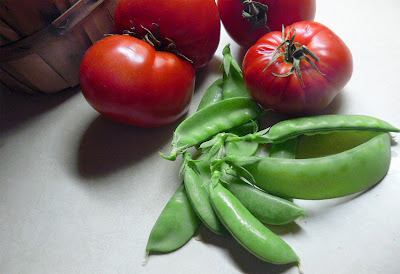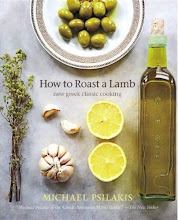
When I read the post about making Freezer Jam by those two southern boys, Clay and Zach at The Bitten Word I knew that I had to try this method of making jam
The recipe appeared easy enough and looked so yummy.
This method seemed perfect to make in small batches as the each new seasonal fruits arrives at the Farm Market.
I dashed off to my local Farmers Market bright and early this morning. I knew that there would be fresh picked cherries and strawberries from a neighboring farm, perfect for this recipe.
I scored a quart of strawberries, a quart of beautiful dark Michigan cherries and a pint of Rainier Cherries and decided that the beautiful cherries were just the thing for this jam recipe.
 I referenced the recipe posted on The Bitten Word: recipe for freezer jam, which I also found to be included in the box of Pectin pouches. I followed the recipe to the letter, measuring and timing exactly. I ladled my cherry mixture into a jar, set it out on the kitchen counter as directed and left the house for the day..
I referenced the recipe posted on The Bitten Word: recipe for freezer jam, which I also found to be included in the box of Pectin pouches. I followed the recipe to the letter, measuring and timing exactly. I ladled my cherry mixture into a jar, set it out on the kitchen counter as directed and left the house for the day..When I retuned about 8 hours later, I was not happy to see what was happening in my blue Ball jar. The pectin was congealed and pink and had separated form the cherries and the dark cherry liquid. It looked like a pink monster hibernating in my Ball jar.
Yikes…!
I don’t know what went wrong, but I was hoping that I could figure out how to tame thie pink monster or else this would be an expensive mistake.
(In hind sight, I should have photogtaphed the monster in the Ball jar...lol..
So sorry. I was a bit flustered and just dove in to repair the mess.)

Remembering my what I had read in Harold McGee’s classic book On Food and Cooking, as fruit is heated to near the boil, the pectin is shaken loose from the cell walls and released into the plant juice and water. The sugar that is added to the recipe is hydroscopic (attracts water) pulls water away from the natural pectins so they can bond again. Also evaporating some of the liquid through a boil will bring the natural fruit pectin and the added pectin closer together to form a web-like structure that will result in a thick consistency.
Sorry to go all science-nerd on you, but when I cook I like to understand the scientific processes that occur. That knowledge helps to be a better cook than just following a recipe.

So it made culinary sense to followed the advice given by Zach to another commenter on The Bitten Word. I decanted the congealed failed mixture in to a pot and gently and very slowly boiled it down for about ½ hour, keeping the temperature just under a boil and stirred every few minutes.
The color of the congealed jam-in-progress was also a rather unattractive, sort of a Hello-Kitty-Pink. I added about one ounce of fruity Merlot to give it a deep rich dark red color. (Don’t get me wrong, I love Hello-Kitty-Pink on a little girl’s lunchbox, but not in my jam.) After the alcohol cooked off during the half-hour, the wine taste was not discernable and deeper color looked just right.

I let the mixture cool and retuned it to a freshly sterilized jar, capped it and let it cool on my counter until bedtime (approximately 5 hours) and then put the jar in the refrigerator overnight.
Early this morning I so pleasantly surprised to discover that that the jam had set to a dense “jammy” consistency. It spooned up nicely to my mouth and had a deep, dark, rich flavor and an unctuous mouth feel. For breakfast, I made gluten-free pancakes and the chill-chest cherry jam was a perfect topping.

So what I thought was a gloppy disaster, with the advice of my friends at The Bitten Word and the sound food-science advice of Harold McGee, all is well in my chill-chest today. A big merci beaucoup to all…





 The salad demo began with Chef McGee illustrated the precise, but easy to do steps to make a Parmesan cheese basket to fill with Balsamic Vinaigrette dressed micro greens. He toasted a medium-sized long grate of Parmesano Reggiano into a non-stick pan. When the cheese became golden brown and delicious he gently formed the warm cheese round over a large juice- sized can covered with aluminum foil.
The salad demo began with Chef McGee illustrated the precise, but easy to do steps to make a Parmesan cheese basket to fill with Balsamic Vinaigrette dressed micro greens. He toasted a medium-sized long grate of Parmesano Reggiano into a non-stick pan. When the cheese became golden brown and delicious he gently formed the warm cheese round over a large juice- sized can covered with aluminum foil.



 The restaurant is open for lunch Tuesday through Friday, 11:30 a.m. to 2 p.m.
The restaurant is open for lunch Tuesday through Friday, 11:30 a.m. to 2 p.m.
 Alexander Lobrano’s article on the authentic tastes of Paris is well worth a read. His “Address Book” will help you plan your foray into the restos that are dear to the heart of Parisiennes as they stay true to the original flavors of the traditional cuisine and have the charming ambience of times past.
Alexander Lobrano’s article on the authentic tastes of Paris is well worth a read. His “Address Book” will help you plan your foray into the restos that are dear to the heart of Parisiennes as they stay true to the original flavors of the traditional cuisine and have the charming ambience of times past.

 Although I have been to Jefferson's Garden many times, this aerial image is courtesy of
Although I have been to Jefferson's Garden many times, this aerial image is courtesy of  Although I live in the suburbs of Chicago, the primary garden that provides my salads and herbs are grown in containers on my ground level terrace and balcony gardens.
Although I live in the suburbs of Chicago, the primary garden that provides my salads and herbs are grown in containers on my ground level terrace and balcony gardens.
 Oregon Sugar Pod II Snow peas are an heirloom, flat-podded snow pea. They have a tasty, stringless pod for stir-fry and salads.
Oregon Sugar Pod II Snow peas are an heirloom, flat-podded snow pea. They have a tasty, stringless pod for stir-fry and salads.


 I was intrigued and inspired by the myriad of sizes and shapes and the rainbow of colors of these Heirlooms and hoped that some of them would do well in containers.
I was intrigued and inspired by the myriad of sizes and shapes and the rainbow of colors of these Heirlooms and hoped that some of them would do well in containers. baby Cherokee Purple at birth
baby Cherokee Purple at birth The Mortgage Lifter tomato was developed in the early 1930's in Logan, West Virginia by a radiator repairman, "Radiator Charlie" Byles. Without any experience in breeding, he made a successful cross of four of the largest tomatoes he could find - German Johnson, Beefsteak, an Italian variety, and an English variety.
The Mortgage Lifter tomato was developed in the early 1930's in Logan, West Virginia by a radiator repairman, "Radiator Charlie" Byles. Without any experience in breeding, he made a successful cross of four of the largest tomatoes he could find - German Johnson, Beefsteak, an Italian variety, and an English variety.






